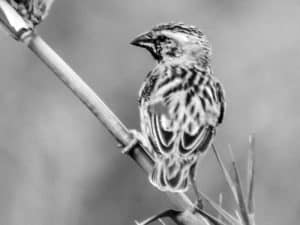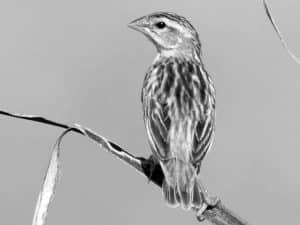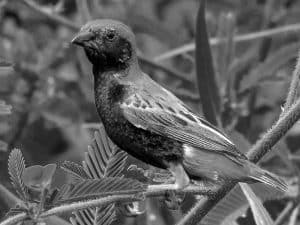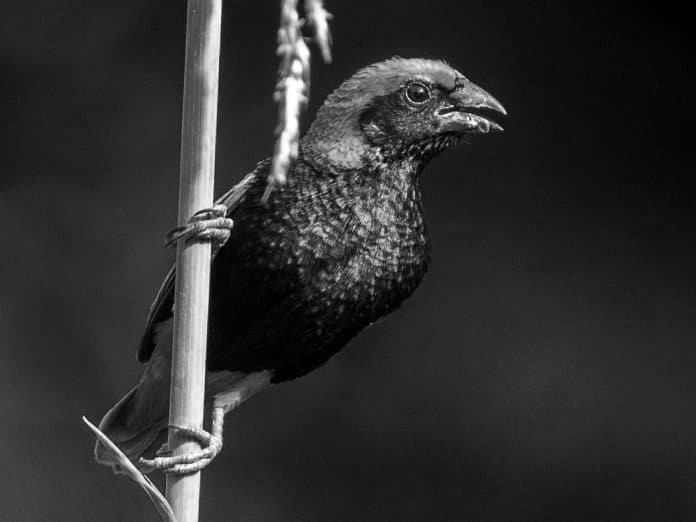Introduction to the Zanzibar Red Bishop Bird
Tucked away in the vibrant landscapes of Tanzania lies a true avian gem – the Zanzibar Red Bishop. This striking bird, with its vibrant plumage and captivating behavior, has long captivated the hearts of birdwatchers and nature enthusiasts alike. As you delve into the world of the Zanzibar Red Bishop in Tanzania, you’ll uncover a fascinating tale of adaptation, survival, and the remarkable diversity that Tanzania’s avian realm has to offer.
Habitat and Distribution of the Zanzibar Red Bishop in Tanzania

The Zanzibar Red Bishop, also known as the Zanzibar Bishop, is a species of weaver bird endemic to the islands of Zanzibar and Pemba, as well as the coastal regions of mainland Tanzania. These birds thrive in a variety of habitats, including wetlands, marshes, and even urban areas with lush vegetation. Their preferred haunts often include reed beds, swamps, and agricultural fields, where they can find an abundant food source and suitable nesting sites.
Physical Characteristics and Behavior of the Zanzibar Red Bishop
The Zanzibar Red Bishop is a striking sight to behold, with its vibrant red plumage and distinctive black mask. During the breeding season, the male birds transform into a true spectacle, their feathers erupting in a brilliant scarlet hue that serves to attract potential mates. Outside of the breeding season, the birds adopt a more subdued brown and yellow coloration, blending seamlessly into their surroundings.
These birds are known for their lively and acrobatic behavior, often seen flitting from one perch to another or engaging in elaborate courtship displays. Their melodious calls, a series of chirps and trills, can be heard echoing across the wetlands, adding to the captivating soundscape of their habitat.
Breeding and Nesting Habits of the Zanzibar Red Bishop
The breeding season of the Zanzibar Red Bishop typically coincides with the onset of the rainy season, when the birds engage in a grand display of their vibrant plumage. The males construct intricate nests, woven from reeds and grasses, often in dense vegetation or near water sources. These nests serve as the foundation for their breeding activities, where the females lay and incubate their clutch of eggs.
The Zanzibar Red Bishop is a colonial breeder, with multiple pairs nesting in close proximity to one another. This social behavior not only provides a sense of community but also offers protection against predators. The chicks, once hatched, are cared for by both parents, who work tirelessly to ensure their offspring’s survival.
Conservation Status and Efforts for the Zanzibar Red Bishop
The Zanzibar Red Bishop is currently classified as a Least Concern species by the International Union for Conservation of Nature (IUCN). However, like many other bird species, it faces various threats to its survival, including habitat loss, agricultural expansion, and the impacts of climate change.
Conservation efforts in Tanzania have focused on protecting the critical wetland habitats that the Zanzibar Red Bishop calls home. Local organizations and government agencies work to raise awareness about the importance of these ecosystems and implement sustainable management practices. Additionally, research and monitoring initiatives help to better understand the population dynamics and ecological needs of this remarkable bird.
Interesting Facts about the Zanzibar Red Bishop

- The Zanzibar Red Bishop is known for its impressive courtship displays, where the males perform acrobatic aerial maneuvers and engage in intense territorial disputes.
- These birds are highly social and often form large flocks, especially during the non-breeding season, when they can be seen foraging and roosting together.
- The Zanzibar Red Bishop is a skilled nest builder, constructing intricate, woven structures that can withstand the elements and provide a safe haven for their offspring.
- Despite their vibrant plumage, the Zanzibar Red Bishop is known to be a relatively shy and elusive bird, often taking refuge in the dense vegetation of their wetland habitats.
Best Places to Spot the Zanzibar Red Bishop in Tanzania
Tanzania’s diverse landscapes offer numerous opportunities to catch a glimpse of the Zanzibar Red Bishop. Some of the best places to spot these birds include:
- Jozani-Chwaka Bay National Park (Zanzibar): This protected area is home to a thriving population of Zanzibar Red Bishops, with the birds often seen foraging and nesting in the park’s lush wetlands.
- Saadani National Park (Mainland Tanzania): Situated along the coast, Saadani National Park boasts a variety of habitats, including marshes and mangrove swamps, where the Zanzibar Red Bishop can be found.
- Mkomazi National Park (Mainland Tanzania): This park, located in the northeastern region of Tanzania, is known for its diverse birdlife, including the Zanzibar Red Bishop, which can be spotted in the park’s wetland areas.
- Mikumi National Park (Mainland Tanzania): While primarily known for its large mammal populations, Mikumi National Park also provides a haven for the Zanzibar Red Bishop, particularly in the park’s wetland regions.
Tips for Birdwatching in Tanzania
Birdwatching in Tanzania can be a truly rewarding experience, with the opportunity to encounter a vast array of avian species, including the captivating Zanzibar Red Bishop. Here are some tips to enhance your birdwatching adventures:
- Invest in Quality Optics: Equip yourself with a good pair of binoculars or a spotting scope to get a closer look at the birds and their intricate details.
- Respect the Environment: Adhere to local conservation guidelines, stay on designated trails, and avoid disturbing the birds or their habitats.
- Time Your Visits Wisely: The early morning and late afternoon hours are often the best times to spot birds, as they are more active during these periods.
- Familiarize Yourself with Local Species: Refer to field guides or consult local experts to learn about the diverse bird species found in Tanzania, making it easier to identify the Zanzibar Red Bishop.
- Be Patient and Observant: Birdwatching requires a keen eye and a willingness to wait patiently for the birds to reveal themselves. Take the time to observe their behavior and movements.
Other Bird Species Found in Tanzania
Tanzania is a birdwatcher’s paradise, home to an incredible diversity of avian species. In addition to the Zanzibar Red Bishop, you may have the opportunity to spot a variety of other fascinating birds, such as:
- Kilimanjaro Shrike
- Rüppell’s Vulture
- Lilac-breasted Roller
- Superb Starling
- Crowned Crane
- Fischer’s Lovebird
- Kori Bustard
Conclusion: Appreciating the Beauty of the Zanzibar Red Bishop in Tanzania

The Zanzibar Red Bishop is a true gem of Tanzania’s avian realm, a testament to the country’s remarkable biodiversity and the importance of preserving its delicate ecosystems. As you explore the vibrant landscapes of Tanzania, keep a watchful eye and a keen ear for the Zanzibar Red Bishop, for its captivating presence is a reminder of the natural wonders that await those who venture forth.

































